VISUAL ESSAY
Highways to Hell: A trail of destruction between Johannesburg and Durban
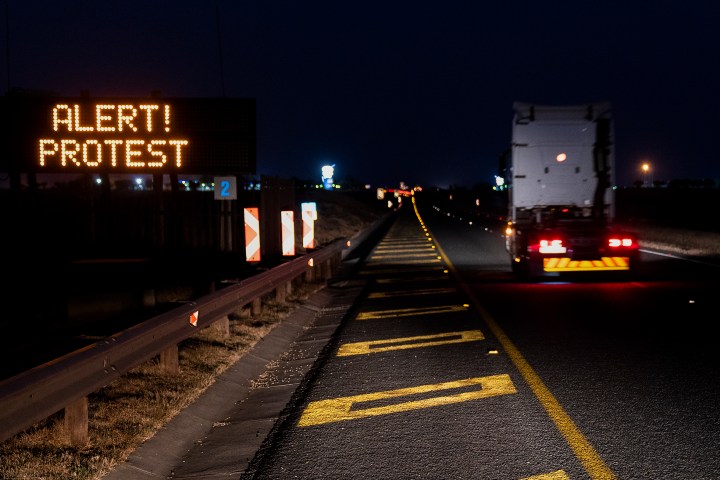
As KwaZulu-Natal and Gauteng begin counting the economic and social costs of last week's violent looting and destruction, Daily Maverick's Shiraaz Mohamed drove from Johannesburg to Durban to photograph the trail of destruction.
The trail of destruction caused by looters is visible in several areas between Johannesburg and Durban, particularly once you pass Harrismith and enter KwaZulu-Natal. The sight of burnt buildings, cars and debris is common place, as is the growing food lines thanks to disrupted supply chains.
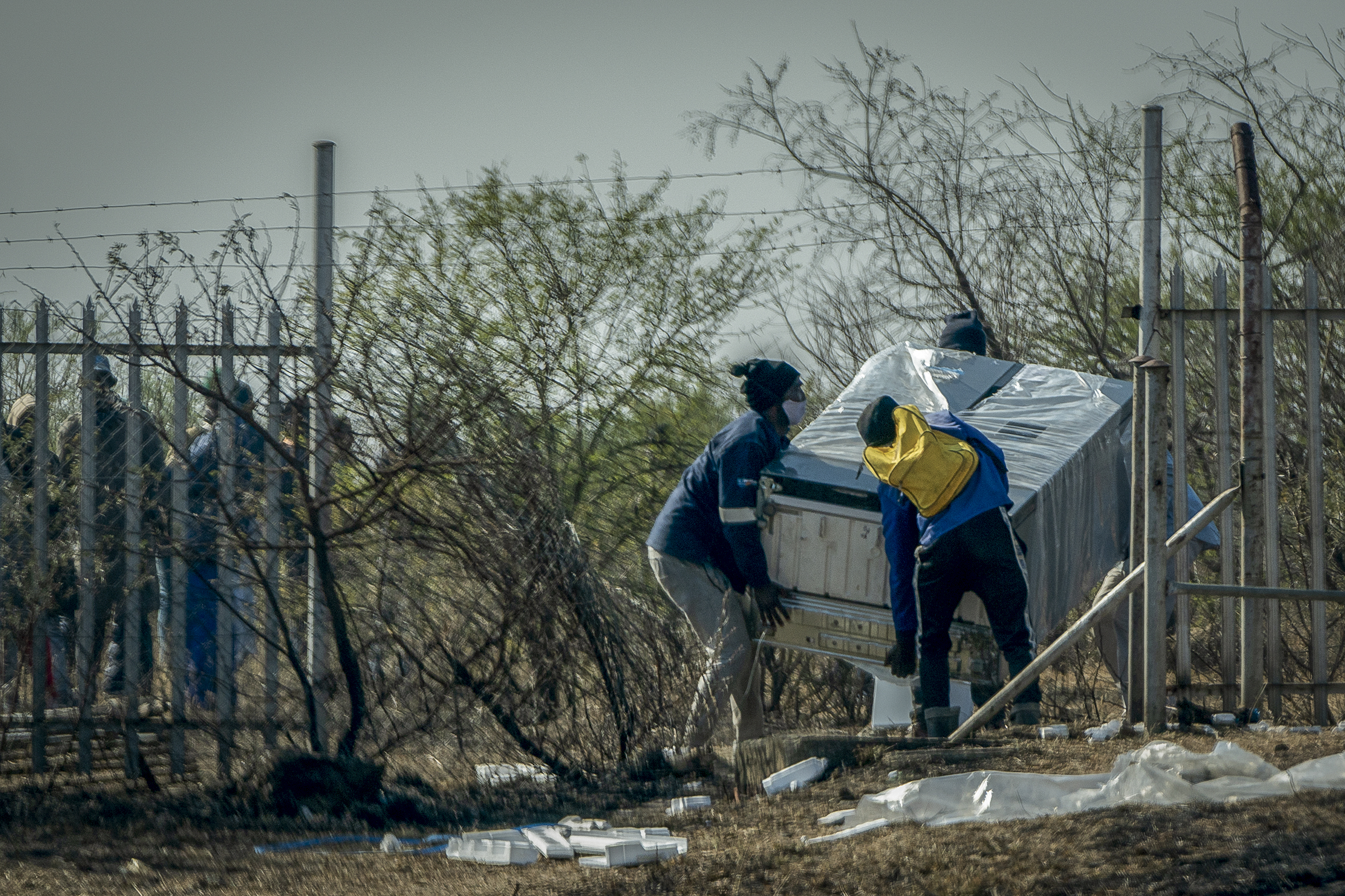
In Ladysmith, looters targeted the Defy warehouse situated on the outskirts of the town. At the height of the looting, fridges, washing machines and other white goods were stashed in a bush for collection later on. Here a group of men are seen trying to carry a double-door fridge on 15 July 2021. (Photo: Shiraaz Mohamed)
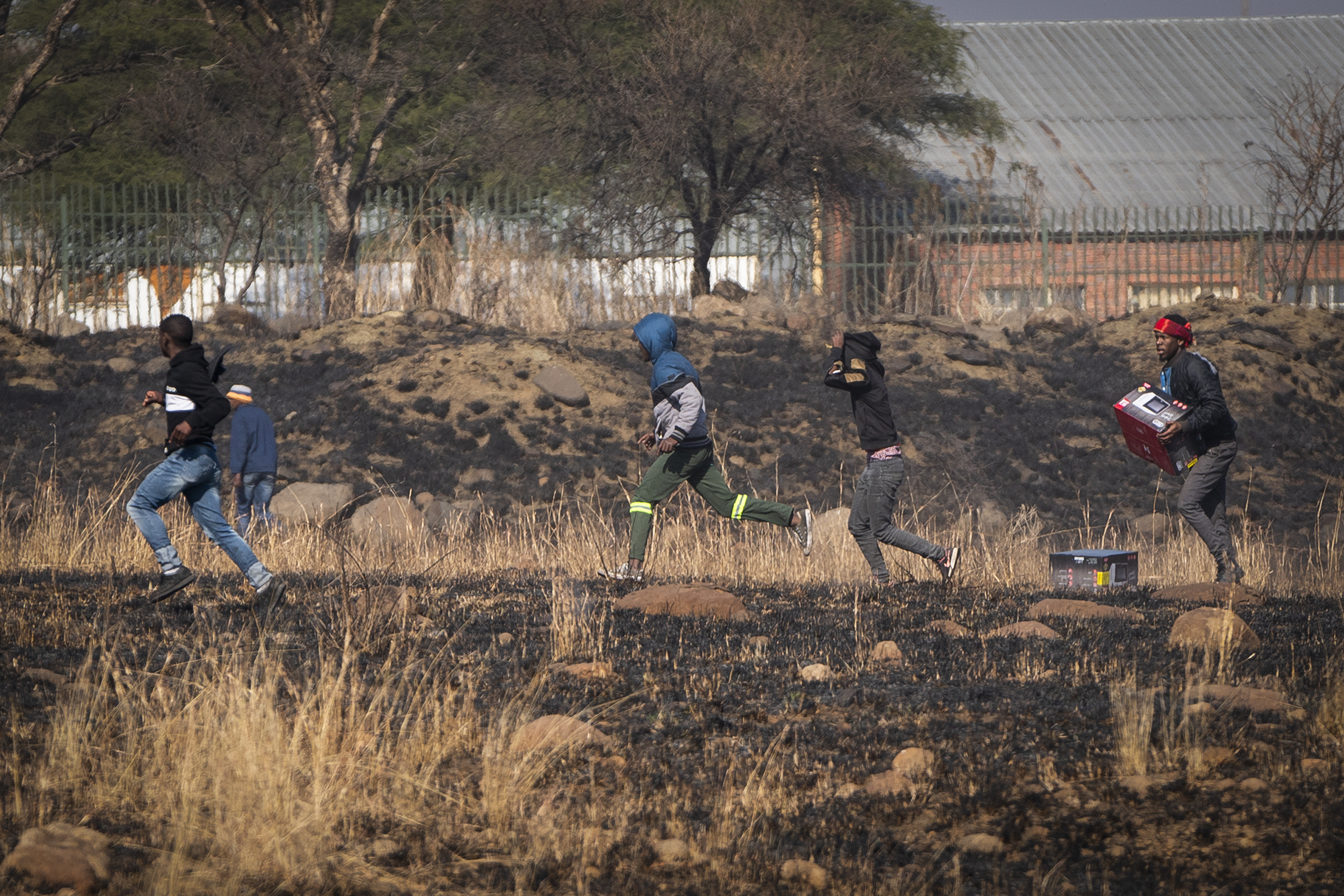
Police in Ladysmith discovered looted goods in a veld and set up a cordon. Looters who returned to collect the goods were dispersed by police firing rubber bullets. But the small number of police battled to contain the many looters. (Photo: Shiraaz Mohamed)
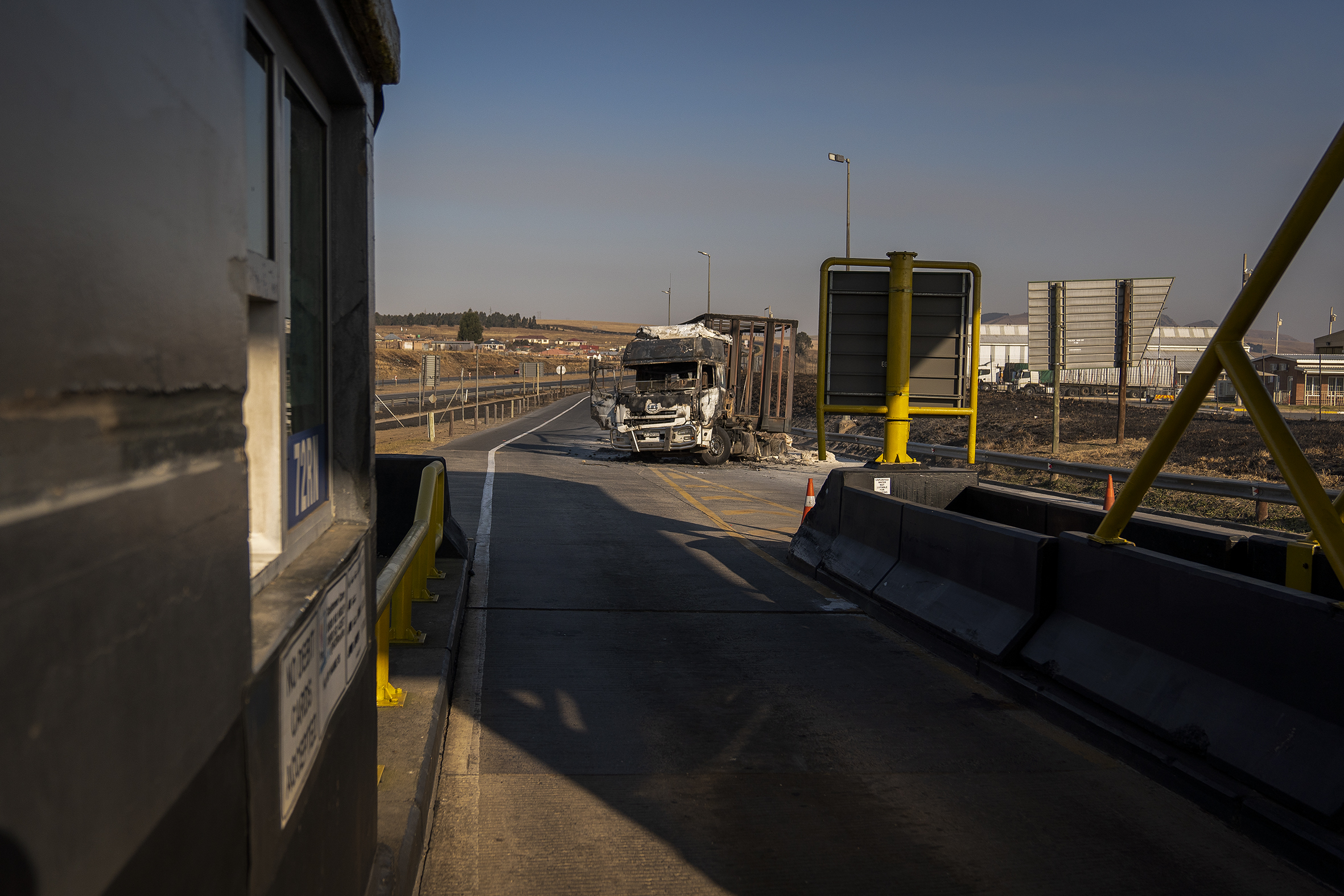
In Mooi River, a minibus from the Western Cape Public Order Policing stood at the Mooi Plaza. Violence was carried out on truckers travelling along the N3. At Mooi Plaza, the burnt trucks could still be seen on 15 July 2021. (Photo: Shiraaz Mohamed)
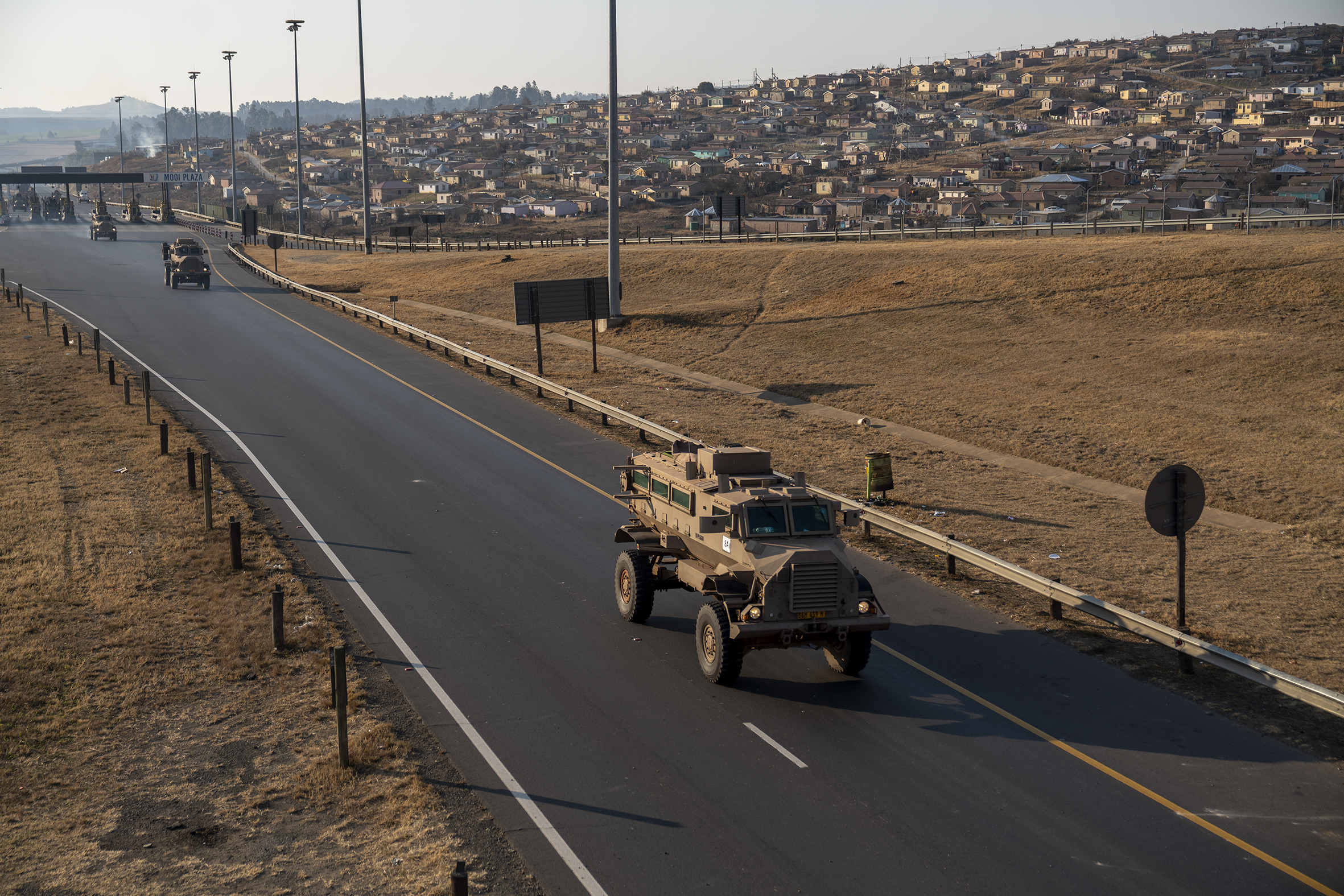
Army personnel carriers leave the Mooi Plaza towards Durban on the N3 on 15 July 2021. This follows the announcement of the deployment of an additional 25,000 troops. Earlier, about 12km from Mooi River, a convoy of army personnel carriers pulled off and parked in the yellow lane of the N3. (Photo: Shiraaz Mohamed)
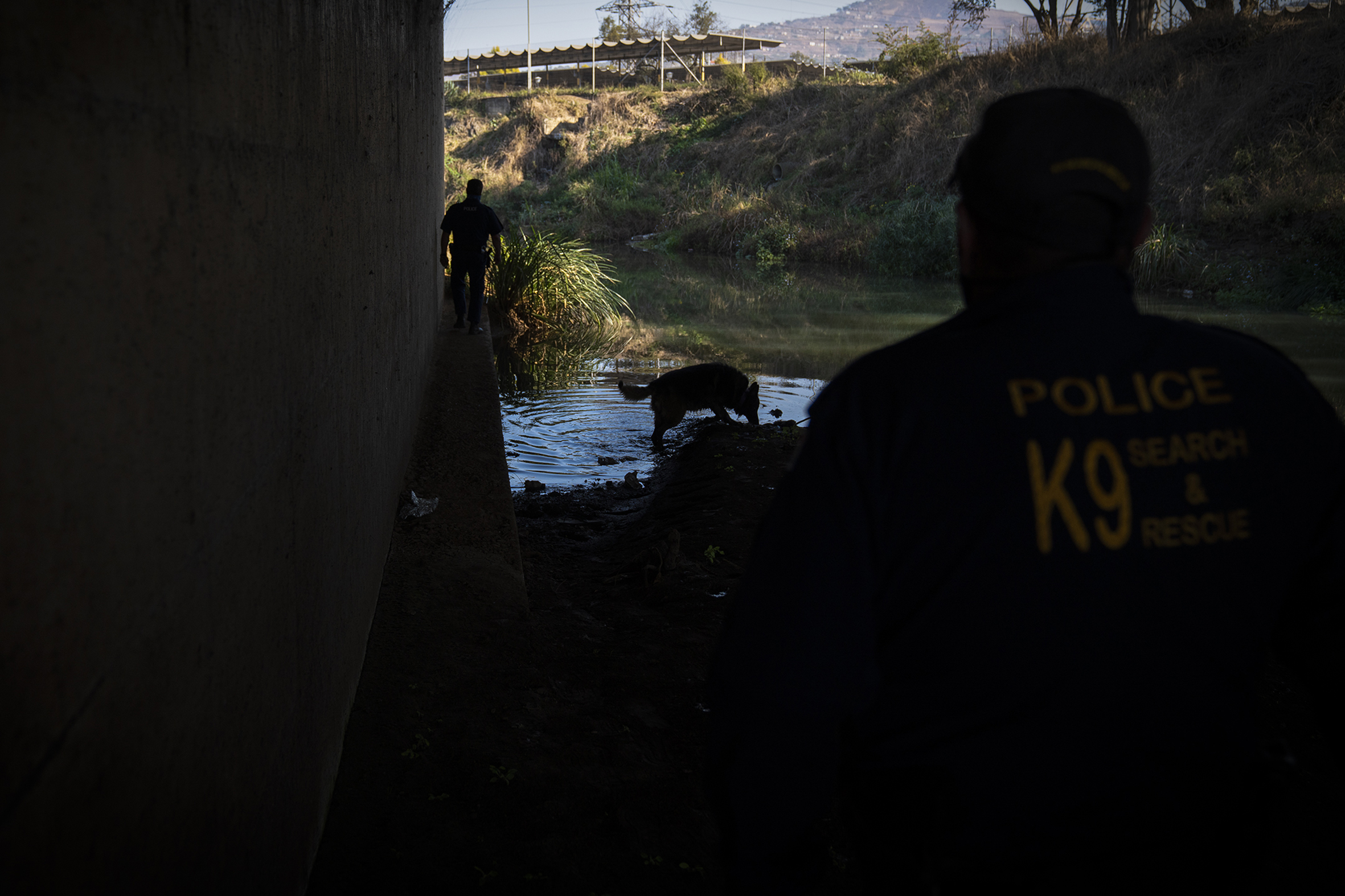
Members of the SAPS Search and Rescue Unit search for dead bodies after several were found on previous days in Pietermaritzburg on 16 July 2021. According to a policeman who did not want to be named, looters were fighting among themselves over looted goods, which resulted in several deaths. (Photo: Shiraaz Mohamed)
Read: Death toll rising, troops on the ground as looting and burnings continue on Tuesday
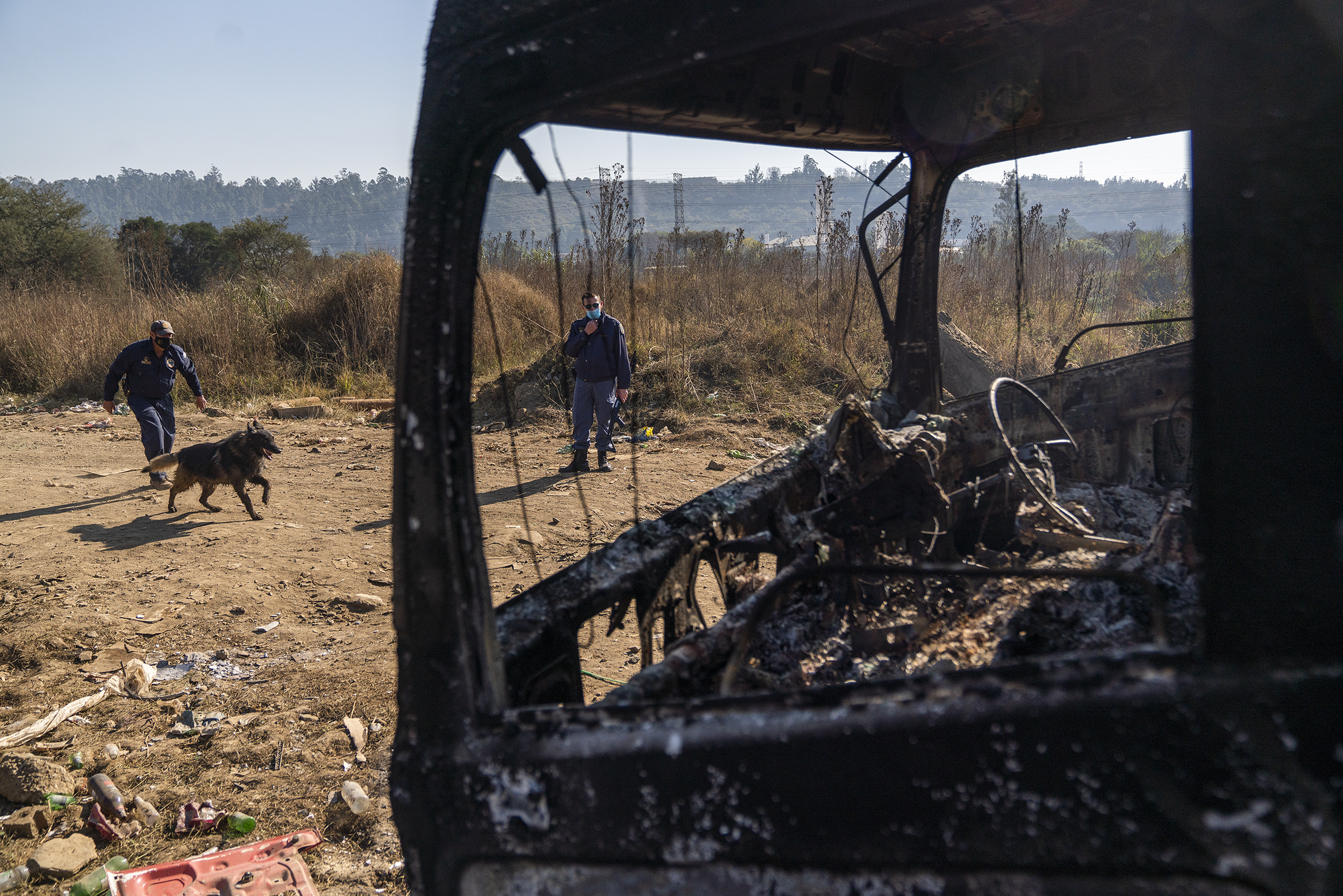
Members of the SAPS Search and Rescue Unit walk past a burnt truck as they search for dead bodies in Pietermaritzburg on 16 July 2021. (Photo: Shiraaz Mohamed)
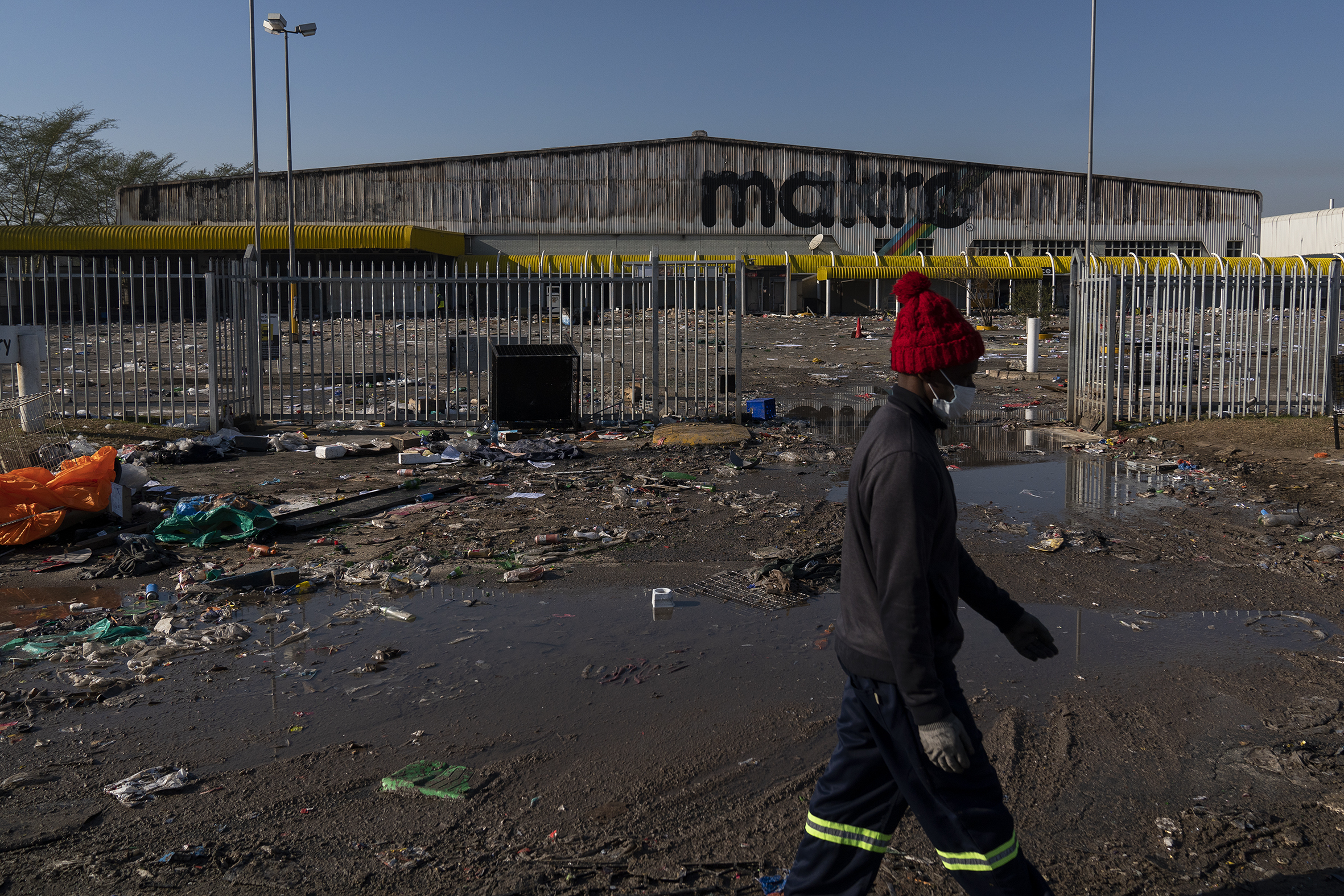
At Camps Drift in Pietermaritzburg, where a Makro store is located, locals and business owners started the clean-up campaign on 16 July 2021. The Makro was completely gutted during the violence. According to the city, 15,000 jobs and billions of rands have been lost as a result of the looting in the capital city. (Photo: Shiraaz Mohamed)
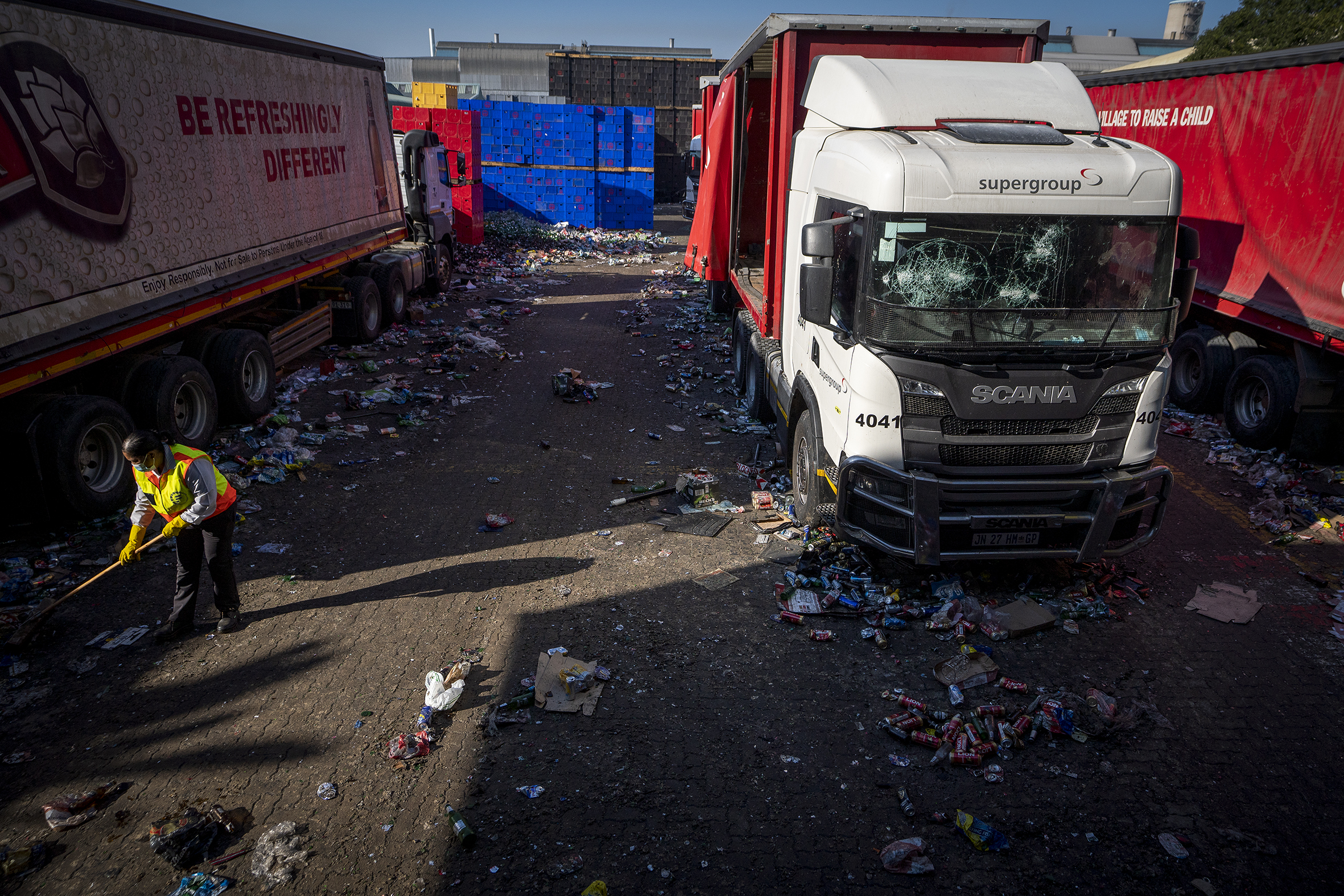
South African Breweries (SAB) depot workers and cleaners restore the entrance to the depot in Pietermaritzburg on 16 July 2021. Inside stood three trucks, one with a smashed windscreen. Another was found burnt about a kilometre away from the depot. Bottle stores and SAB depots were key targets of last week’s looting. Alcohol sales have been restricted under Level 4 lockdown regulations. (Photo: Shiraaz Mohamed)
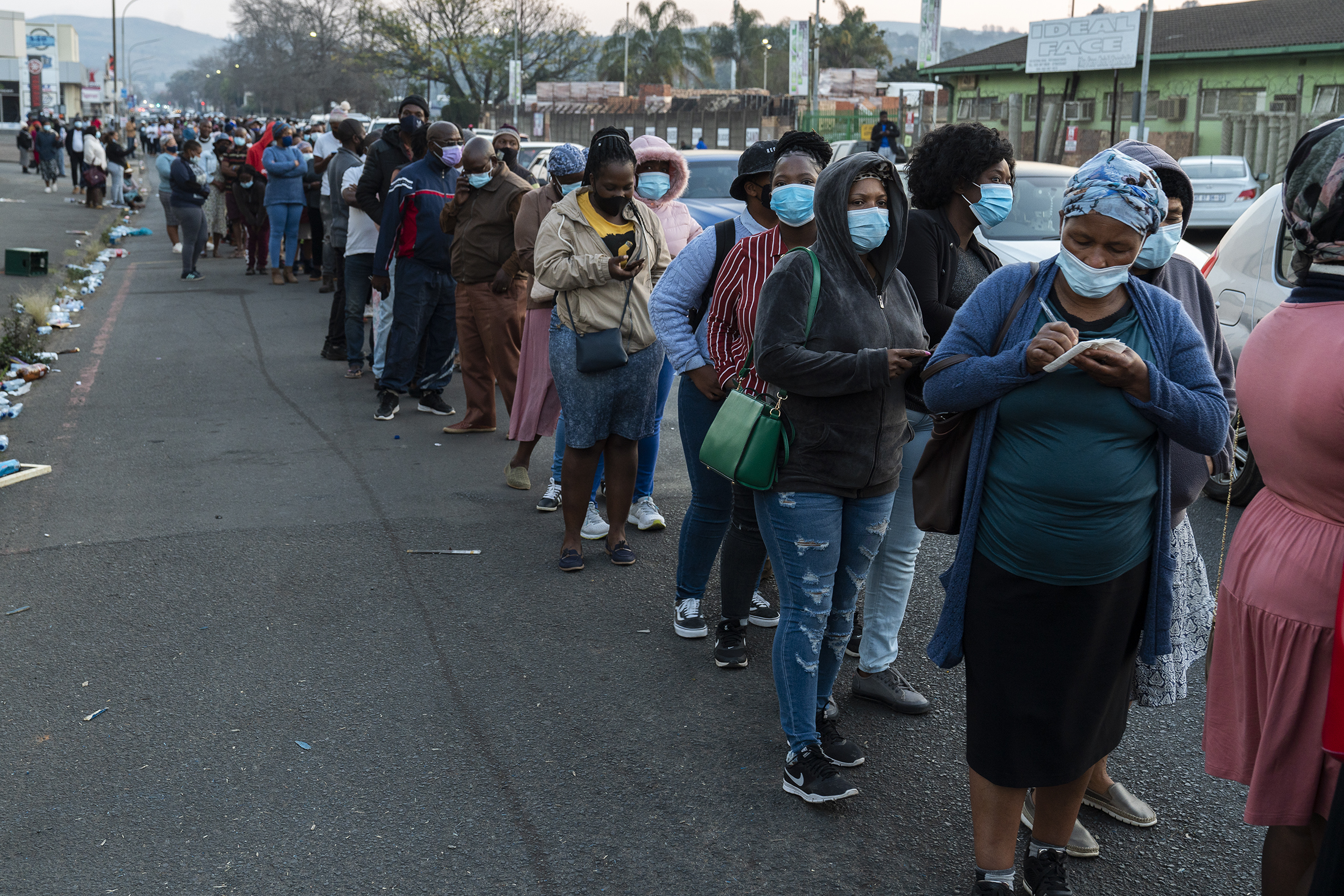
In Pietermaritzburg, queues of cars and people extending for more than 1km were seen outside Save Hyper wholesaler. Guards stood with automatic rifles directing traffic. Fears of food shortages have been growing, with some store owners rationing how much they sell to one person. (Photo: Shiraaz Mohamed)
Read: Food and fuel shortages loom in South Africa after logistics networks wrecked by riots
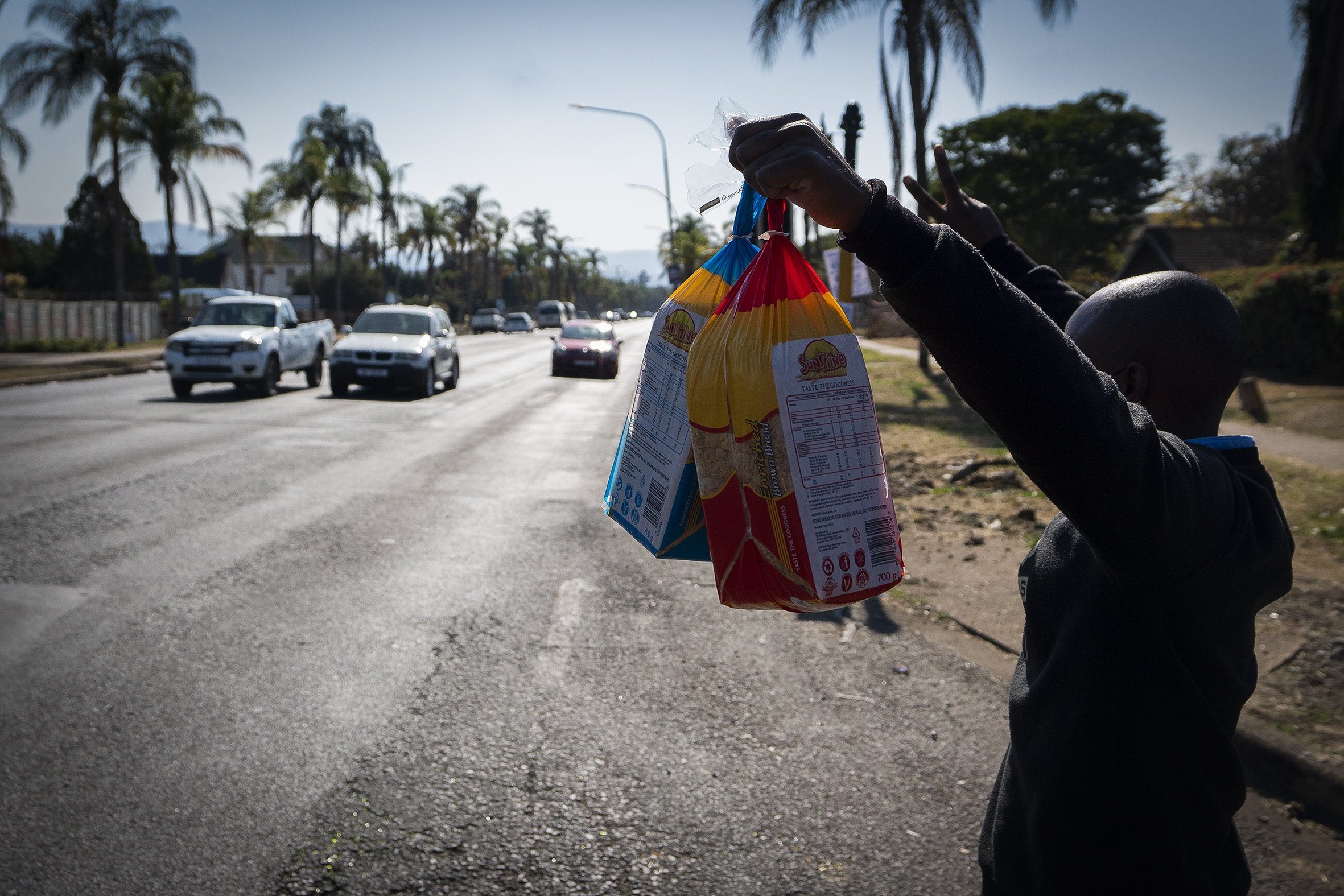
Standing beside the road in Pietermaritzburg was Mduduzi Phetha, who sold bread to motorists from his car boot for R20 per loaf. A loaf usually costs R14. Motorists quickly stopped to buy the bread from Phetha. (Photo: Shiraaz Mohamed)
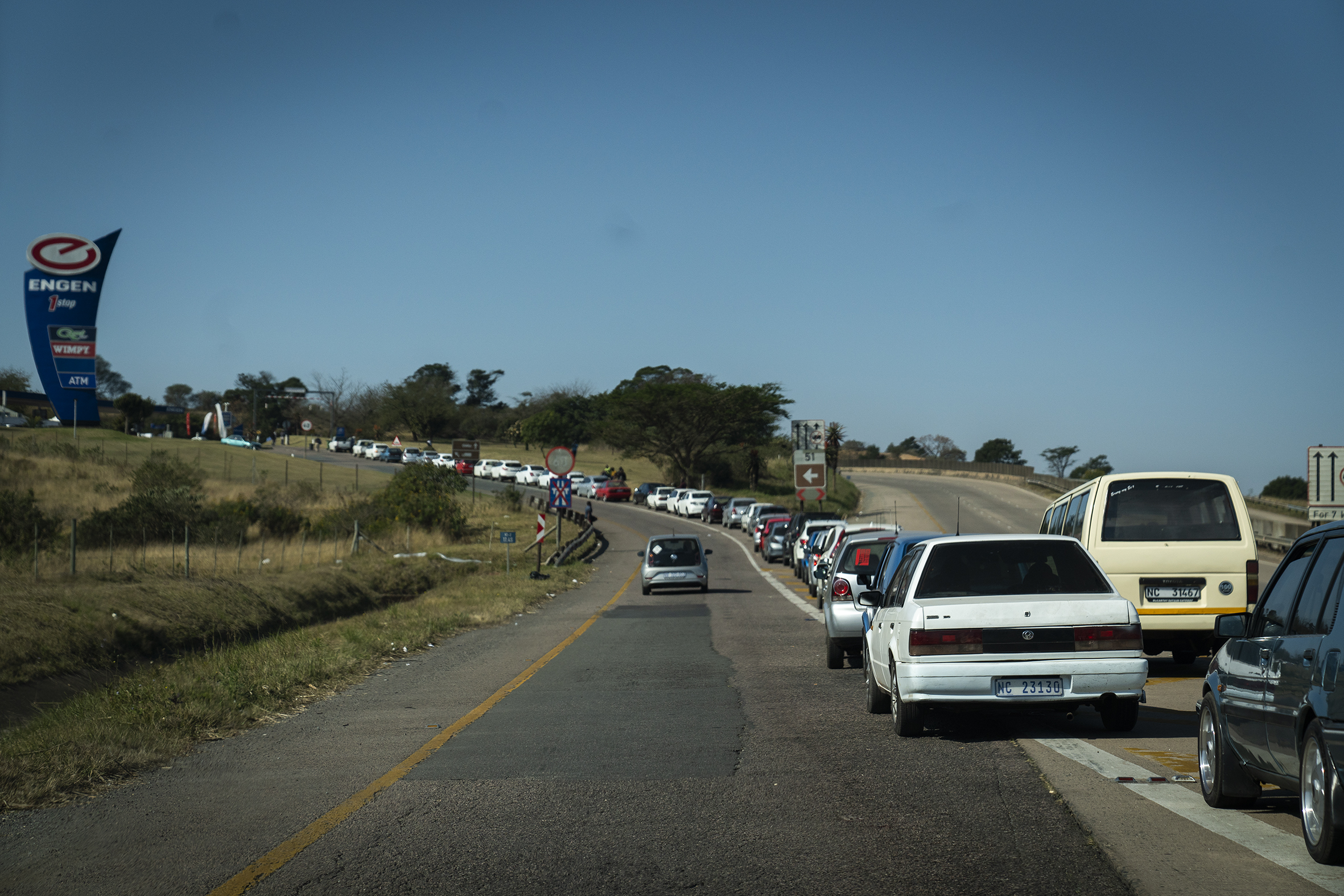
On the N3 towards Durban, a queue of cars headed for the Engen Cato Ridge fuel stop. Fuel shortages were experienced all over the province following disruption to supply lines as a result of the violence. Motorists waited in line for three hours. (Photo: Shiraaz Mohamed)

A mother carrying her baby waits in line to collect food at a distribution point in Windermere in Durban on 18 July 2021. Various communities of Gauteng rallied together to provide relief for KwaZulu-Natal residents following the violent unrest. Several large convoys of trucks from various organisations and communities have recently arrived in the province. (Photo: Shiraaz Mohamed)
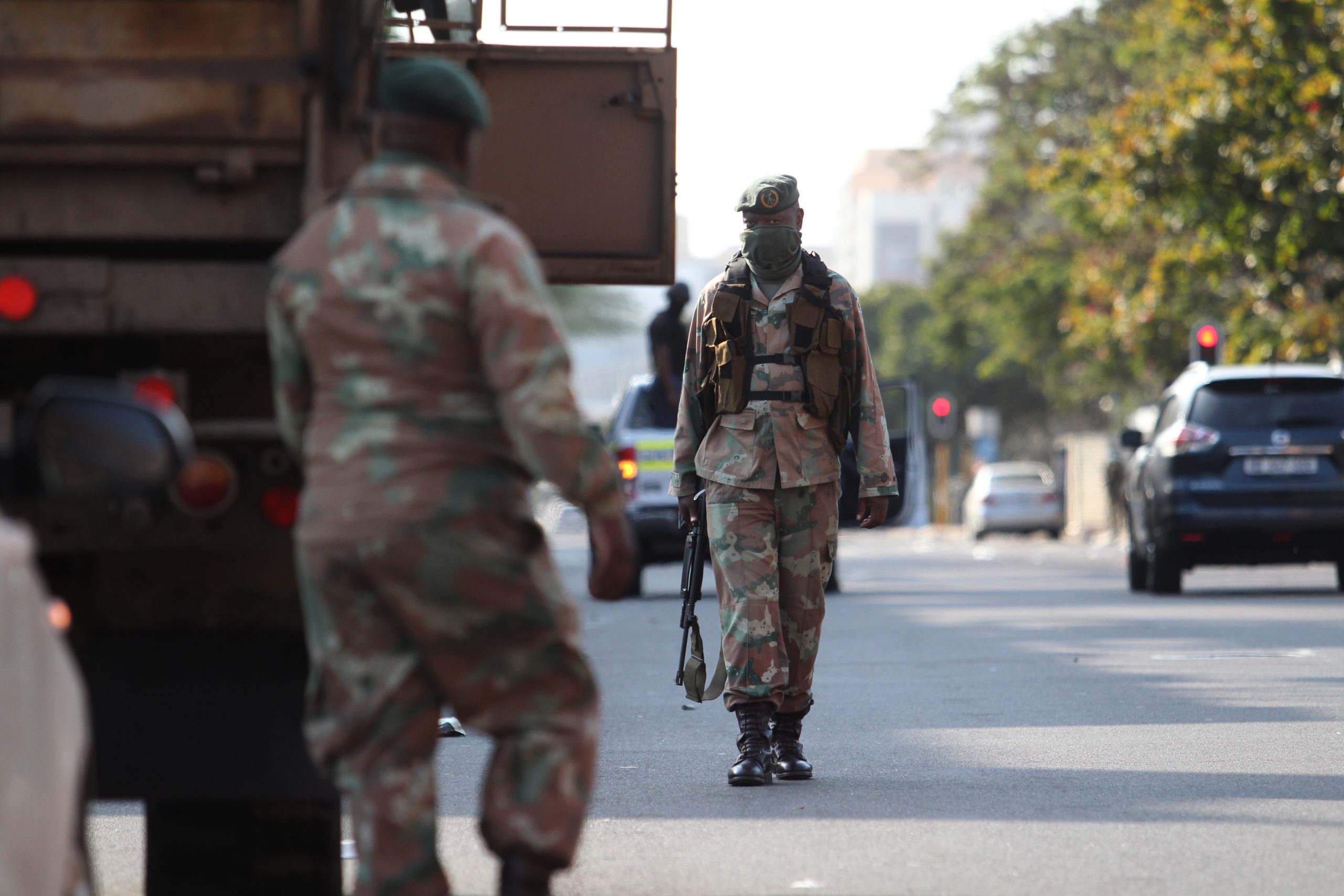
Police and the SANDF are on patrol in Durban, KwaZulu-Natal, where thousands of looters went on the rampage on 13 July 2021. A tense calm has returned to the city as clean-up operations get under way. (Photo: DM/STR)

















 Become an Insider
Become an Insider
Comments - Please login in order to comment.